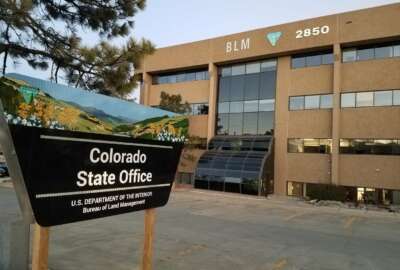
Draining the DC swamp a complicated, costly exercise
Turns out the plan to move Washington-based civil servants closer to the geographic areas they deal with, and the taxpayers they serve, isn’t as cut-and-dried as...
This column has been updated with clarification provided by an OPM spokesperson.
Suppose the boss at close-of-business today tells you that your job, and you, are going to be transferred to Boise, Idaho; or Ogden, Utah; or Kansas City. And that the move could, maybe, mean smaller pay raises in future and almost certainly a reduction of tens of thousands of dollars down the road in the retirement benefits you were expecting.
And if you refuse the offer to move to a lower-pay, smaller-pension area you could maybe get hit with an adverse action and fired. That’s what more than 800 Washington, D.C.-based workers at the Agriculture and Interior department are dealing with now. For them the options may be Kansas City, Grand Junction, Colorado, or unemployment — unless they are eligible to retire.
Turns out the plan to move Washington-based civil servants closer to the geographic areas they deal with, and the taxpayers they serve, isn’t as cut-and-dried as getting a new Amazon facility.
Although many USDA and Interior employees here have already said they won’t move, their jobs will be heading west. But moving government employees involuntarily from one part of the country is complicated and costly at best.
Some see the two actions as the Trump administration fulfilling its promise to move more federal operations out of the Washington area and closer to the people and programs they serve. Critics say it is part of a campaign promise to “drain the D.C. swamp” and also reward loyal politicians by importing high-paying, steady jobs into their home districts and states. D.C. is home to about 15 percent of the non-postal federal civilian workforce. Federal News Network previously reported that many employees slated to be transferred say they will not be going with their jobs, which should make local communities and politicians even happier.
Under the federal locality pay system salaries of employees vary greatly from city to city based on comparisons with local private sector pay. The Washington-Baltimore area, like New York City, San Francisco, Houston and Los Angeles have some of the best paid civil servants. Kansas City does not.
For example, a Grade-11 federal civil servant in Kansas City makes between $62,737 and $81,563 compared to his or her counterpart in the D.C. metro area, who is paid between $69,581 and $90,461 depending on time in that grade.
Related Stories
Most January federal pay raises are for a fixed percentage that is often divided into a flat-across-the-board raise plus differing amounts on a city-by-city basis. This year feds in the D.C. area got larger raises, because of the locality component, than those in most other places, including Kansas City.
Benefits under the Federal Employees Retirement System are based on the employees’ highest three-year average salary, and length of service. The more people make and the longer they work the larger their annuity. Employees under the FERS system also pay into Social Security and have a 401K plan (the Thrift Savings Plan) to which the government contributes up to 5%.
Federal benefits expert Tammy Flanagan said “saved pay” — the ability to transfer and keep current salaries — could be available to D.C. workers who transfer to lower-wage areas. But future pay raises for them could be reduced until their actual pay catches to levels for their new locality.
“I remember when the Ft. Belvoir employees of the Army Material Command were moved to Huntsville, Alabama,” Flanagan said. “They were transferred at their same pay grade and step, but the actual amount of pay was less because of the locality pay [for Huntsville]. For those who retired within a few years of the move, their high-three average was based on the D.C. rates in effect prior to the transfer.”
An OPM spokesperson offered some clarification on this point: “Pay retention does not apply in cases where employees are moved with their positions without a change in grade to a locality pay area with a lower locality rate. The employees will take a pay reduction (just as employees moved to an area with a higher locality rate would receive a pay increase). While the employee is entitled to a lesser payable rate after placement into the new locality pay area, the reduction is entirely attributable to geographic conversion; therefore, pay retention does not apply.”
Flanagan also found official “Geographic Conversion” language from the Office of Personnel Management:
“If, in conjunction with a pay action that may entitle an employee to pay retention, an employee’s official work site changes to a new location where different pay schedules apply, the agency must convert the employee’s rate(s) of basic pay to the applicable pay schedule before determining whether the employee is entitled to pay retention and before determining the employee’s initial pay retention entitlement. (See 5 CFR 536.303(a)).
“Similarly, when an employee is receiving a retained rate and the employee’s official work site changes to a new location where different pay schedules apply, the agency must convert the employee’s retained rate to the new location before redetermining the employee’s pay retention entitlement in the new position of record at the new official work site. (See 5 CFR 536.303(b)).”
In addition to various locality pay areas across the nation, thousands of non-postal federal workers are in the rest of the United States (RUS) pay zone. Its base salary is much lower than for employees in locality pay zones. To compare federal pay scales in Washington-Baltimore, RUS and Kansas City to see how much.
Nearly Useless Factoid
by Amelia Brust
The U.S. was not the first choice to receive the Statue of Liberty, in a way. Before presenting the idea of the Statue of Liberty to Congress, sculptor Frédéric Auguste Bartholdi first pitched the idea to the Egyptian government in 1867 as a light beacon at the entrance of the Suez Canal. That statue would also have been the figure of a woman holding a torch aloft on a pedestal and its name was ““Egypt (or Progress) Carrying the Light to Asia,” but Egypt rejected the idea. Bartholdi then reconfigured the design and proposed it to the U.S. as a gift in honor of the American centennial.
Source: University of Chicago
Copyright © 2025 Federal News Network. All rights reserved. This website is not intended for users located within the European Economic Area.
Mike Causey is senior correspondent for Federal News Network and writes his daily Federal Report column on federal employees’ pay, benefits and retirement.
Follow @mcauseyWFED





